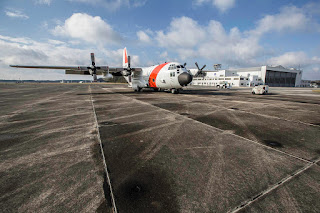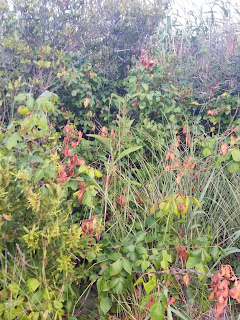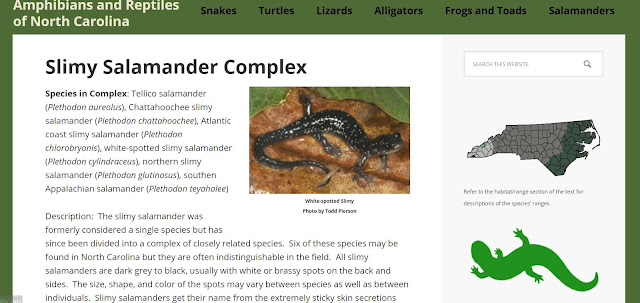First Encounter
Today, July 17, 2019, I arrived on Chincoteague Island. It was a nice drive through the Eastern Shore of Virginia. I decided to make this journey to get a close up look at the salt marshes for myself. I, of course, brought my trusty companion along with me- my curious outdoorsy son.
Perhaps the first part of our trek that perked him up from the seven and a half hour was passing the NASA flight facility on Wallops Island. The highlight was seeing a NASA C-130 outside of the hangar on their grounds. NASA is using the C-130 in support of the Atmospheric Carbon and Transport-America or ACT-America campaign which is monitoring atmospheric levels of carbon and greenhouse gases. I gathered lots of information about their efforts in monitoring GHGs that I will have to put in another post. It is quite fascinating seeing how ozone damages plants and how that impacts the insects and bugs in an ecosystem. But again, that is information for another post.
We crossed the bridge over to Chincoteague Island. It immediately reminded me of the marshes I have seen on South Carolina's barrier islands. There were lots of grasses and dry marsh patches as well as wet marsh patches. The road we traveled ran through them making it easy to imagine how hurricanes and storms could bring storm surges that would wash over the road and possibly wash it away.
Once we were unpacked we learned that the closest beach to our hotel was Assateague Island Nature Refuge. I was not happy at first because I was told it would be $20 to get onto the island to access the beach and trails. I was redeemed to read that bicyclist can access it all for free. The beauty of all of this is the wonderful bike lanes everywhere that make it more advantageous to ride a bicycle than to drive. Besides, this little beach town is quite compact and walkable.
The bike lane allowed us great crossing over the bridge connecting us to Assateague. I could safely stop and snap a few interesting pictures.
The bike trail to the beach was peaceful and well paved. We were on our own path away from cars and winding along an asphalt path through a wooded area. There are lots of trails to take and we chose the closest path to the beach. The marshes are incredibly extensive and the waters meander through the island like reflective ribbons. I wish I could take a hot air balloon ride over the area to see the labyrinth of marsh waterways.
Finally, our trail ended at the beach. The first thing we spot, about 15 feet from the incoming tide, is a very large horseshoe crab. This one was the largest I had seen washed up on the beach. The waves were really coming in and the waters of the Atlantic were freezing cold. I grew up in the 757 and frequently played in the ocean in Virginia Beach, but I do not remember the Atlantic being this cold in mid-July. The temps were at record highs everyday with heat indexes of 110 degrees. The cold water was still too cold to wade in above waist-deep.
These mole crabs littered the beach for miles. They wash up with he tide. It was unusual to see so many parts and pieces of them arched along the beach taking the shape of the waves as they stretched along the sand. The one in the video above was so pretty and whole, I wondered why it had died. It looked like it should have still been alive to pinch me and fight me.

This really is a beautiful and wild beach. Marsh grasses, brush and trees follow me almost right up to the edge of the beach. It is peaceful and beautiful and natural. I had to make special note of the kinds of vegetation that grew along this section of the island. Salt marshes and mudflats and reed grass, shrubs, trees and lots of mosquitoes.
With all the marshland on the island, it is no wonder that the mosquito population is so intense. There are signs in town and on the conservation that tells visitors to be vigilant against them and wear repellant. My son and I were swarmed by them on the bike trail every time I stopped to take a photo. I was not able to photograph everything of interest because the swarms were just too much for me.
This was my first impression of Chincoteague and the Nature Conservation Center. I looked forward to seeing the wild ponies and freshwater marshes in the upcoming days.
We crossed the bridge over to Chincoteague Island. It immediately reminded me of the marshes I have seen on South Carolina's barrier islands. There were lots of grasses and dry marsh patches as well as wet marsh patches. The road we traveled ran through them making it easy to imagine how hurricanes and storms could bring storm surges that would wash over the road and possibly wash it away.
Once we were unpacked we learned that the closest beach to our hotel was Assateague Island Nature Refuge. I was not happy at first because I was told it would be $20 to get onto the island to access the beach and trails. I was redeemed to read that bicyclist can access it all for free. The beauty of all of this is the wonderful bike lanes everywhere that make it more advantageous to ride a bicycle than to drive. Besides, this little beach town is quite compact and walkable.
The bike lane allowed us great crossing over the bridge connecting us to Assateague. I could safely stop and snap a few interesting pictures.
Just beneath the water, you can see the pale oyster shells. Powerful storms have damaged much of the oyster castles, so there are concerted efforts to repair and rebuild these natural water filters.
The road leading onto the conservation had beautiful views of the bay and the marshes.
The bike trail to the beach was peaceful and well paved. We were on our own path away from cars and winding along an asphalt path through a wooded area. There are lots of trails to take and we chose the closest path to the beach. The marshes are incredibly extensive and the waters meander through the island like reflective ribbons. I wish I could take a hot air balloon ride over the area to see the labyrinth of marsh waterways.
Finally, our trail ended at the beach. The first thing we spot, about 15 feet from the incoming tide, is a very large horseshoe crab. This one was the largest I had seen washed up on the beach. The waves were really coming in and the waters of the Atlantic were freezing cold. I grew up in the 757 and frequently played in the ocean in Virginia Beach, but I do not remember the Atlantic being this cold in mid-July. The temps were at record highs everyday with heat indexes of 110 degrees. The cold water was still too cold to wade in above waist-deep.
These mole crabs littered the beach for miles. They wash up with he tide. It was unusual to see so many parts and pieces of them arched along the beach taking the shape of the waves as they stretched along the sand. The one in the video above was so pretty and whole, I wondered why it had died. It looked like it should have still been alive to pinch me and fight me.
The dark shadow on the sand is the horseshoe crab large even in the distance. It too was in pretty good shape. Again making me question what had caused its death.

This really is a beautiful and wild beach. Marsh grasses, brush and trees follow me almost right up to the edge of the beach. It is peaceful and beautiful and natural. I had to make special note of the kinds of vegetation that grew along this section of the island. Salt marshes and mudflats and reed grass, shrubs, trees and lots of mosquitoes.
With all the marshland on the island, it is no wonder that the mosquito population is so intense. There are signs in town and on the conservation that tells visitors to be vigilant against them and wear repellant. My son and I were swarmed by them on the bike trail every time I stopped to take a photo. I was not able to photograph everything of interest because the swarms were just too much for me.
This was my first impression of Chincoteague and the Nature Conservation Center. I looked forward to seeing the wild ponies and freshwater marshes in the upcoming days.


























Comments
Post a Comment